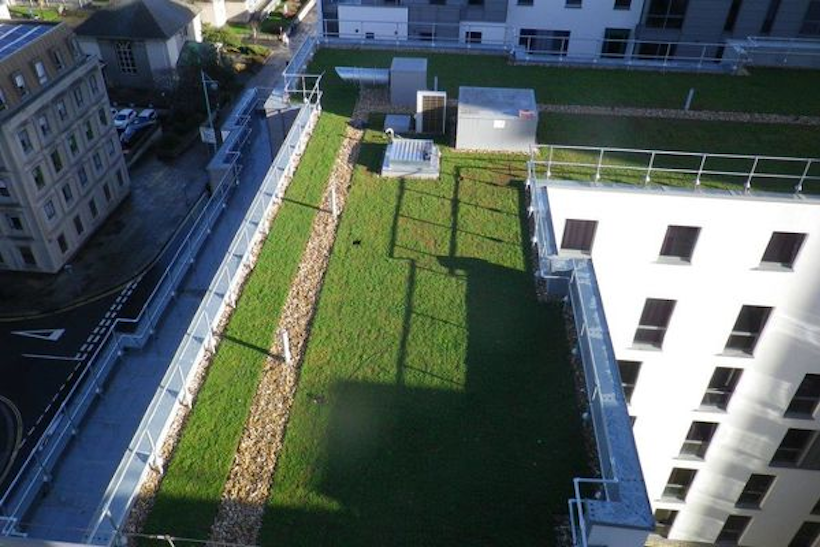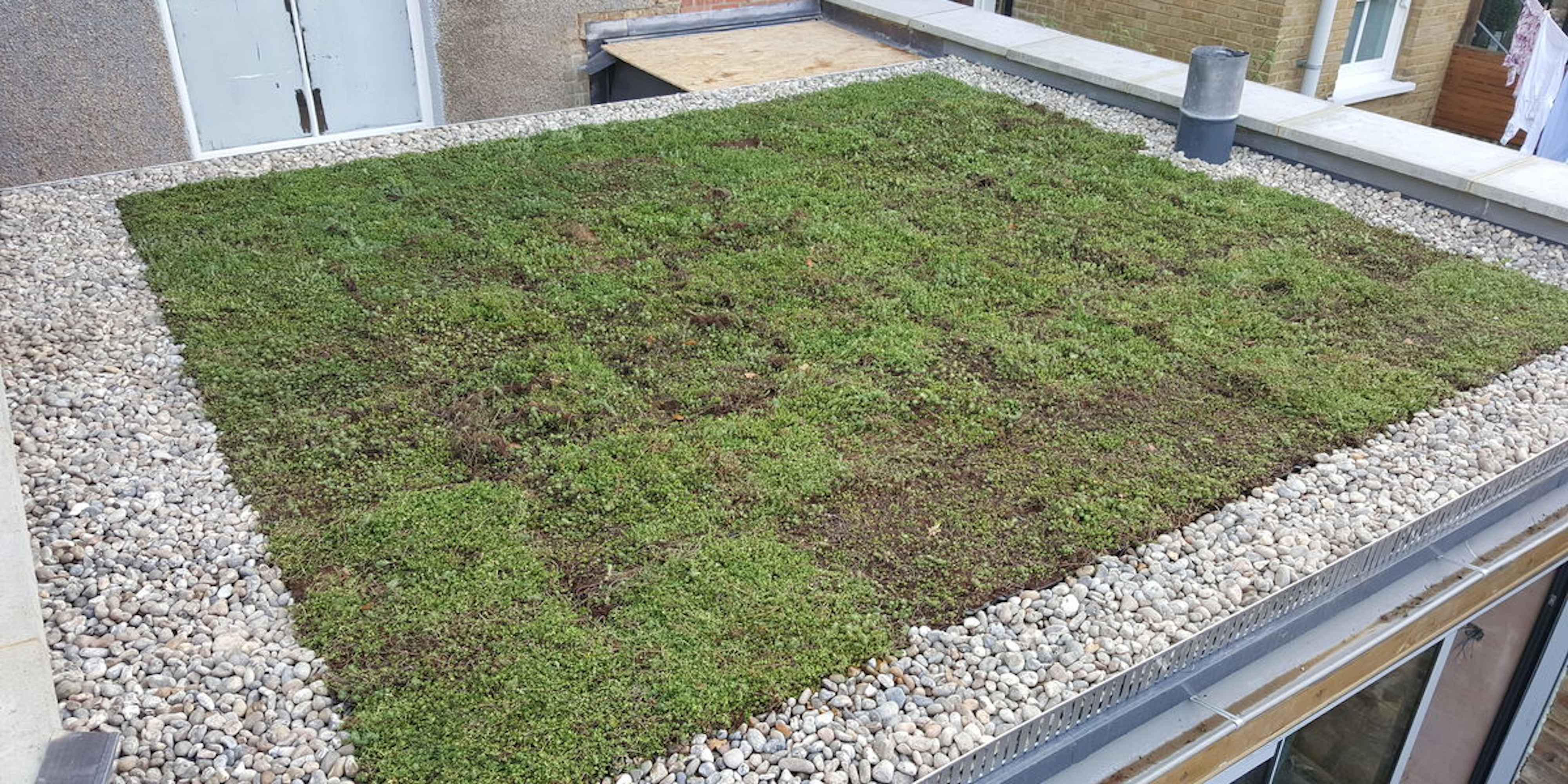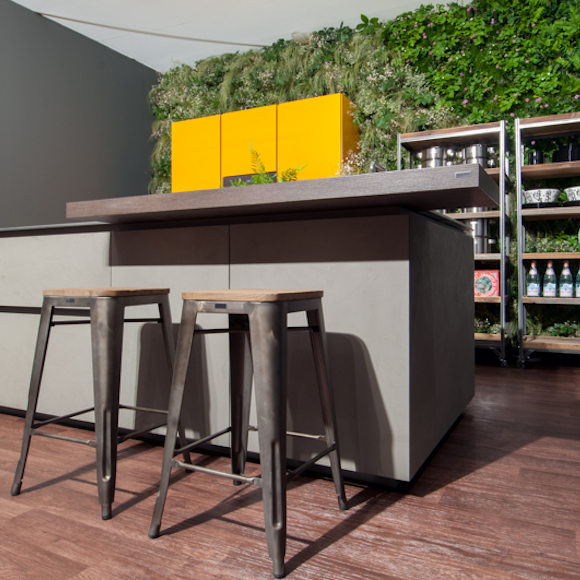Green roofs or ‘living roofs’ are rapidly gaining in popularity thanks in part to the likes of green living champions such as Kevin McCloud from Grand Designs. Not only are green roofs a truly stunning addition to any building, but they also offer a range of economic, social and environmental benefits both for the user and the wider community.
Green roofs can reduce storm water runoff
The recent dramatic weather events across the world have highlighted to many the unpredictable results of climate change and its impact on weather systems. In the UK we have experienced intense upswings in rainfall, which have greatly strained our drainage infrastructure.
Green roofs store a great deal of water. During the summer studies have shown that a green roof can retain 70-90% of the rain that falls on it and 25-40% during the winter, thus alleviating some of the pressure on overwhelmed storm water systems.
Living roofs are energy efficient and better for the environment
Through the daily dew and evaporation cycles living roofs cool and humidify the surrounding air. By doing so studies have shown that not only do they create a beneficial microclimate within their immediate surroundings, but they can also contribute to reducing the “Urban Heat Island” effect. It has now been estimated that if all the roofs in a major city were green roofs, urban temperatures could be reduced by as much as 7 degrees Celsius.
Living roofs not only absorb heat; they also act as insulators and in this way they reduce the need for cooling in the warmer months and heating during cold spell. By lowering air conditioning and heating demand, green roofs therefore decrease the production of associated air pollution and greenhouse gas emissions.
Green roofs improve Air Quality
In the UK an estimated 24,000 people die every year from air pollution. The plants on sedum roofs can lock away airborne pollutants and filter noxious gases and because green roofs moderate the temperature of a building, they consequently reduce the demand on power plants, potentially decreasing the amount of CO2 and other polluting by-products being released into the air.
A green roof is a natural sound insulator
In built up areas living roofs can be of huge benefit to buildings in reducing sound pollution. Studies in the last ten years have shown that an extensive green roof can reduce low frequency sound by 8dB or more when compared with a conventional roof.
Living roofs provide natural Biodiverse Habitats for urban wildlife
As urban sprawl continues to increase, biodiversity is under greater threat than ever and finding solutions to safeguard existing species and increase biodiversity in urban areas is essential. Green roofs sustain a variety of plants and invertebrates, and provide a habitat for various bird species.



